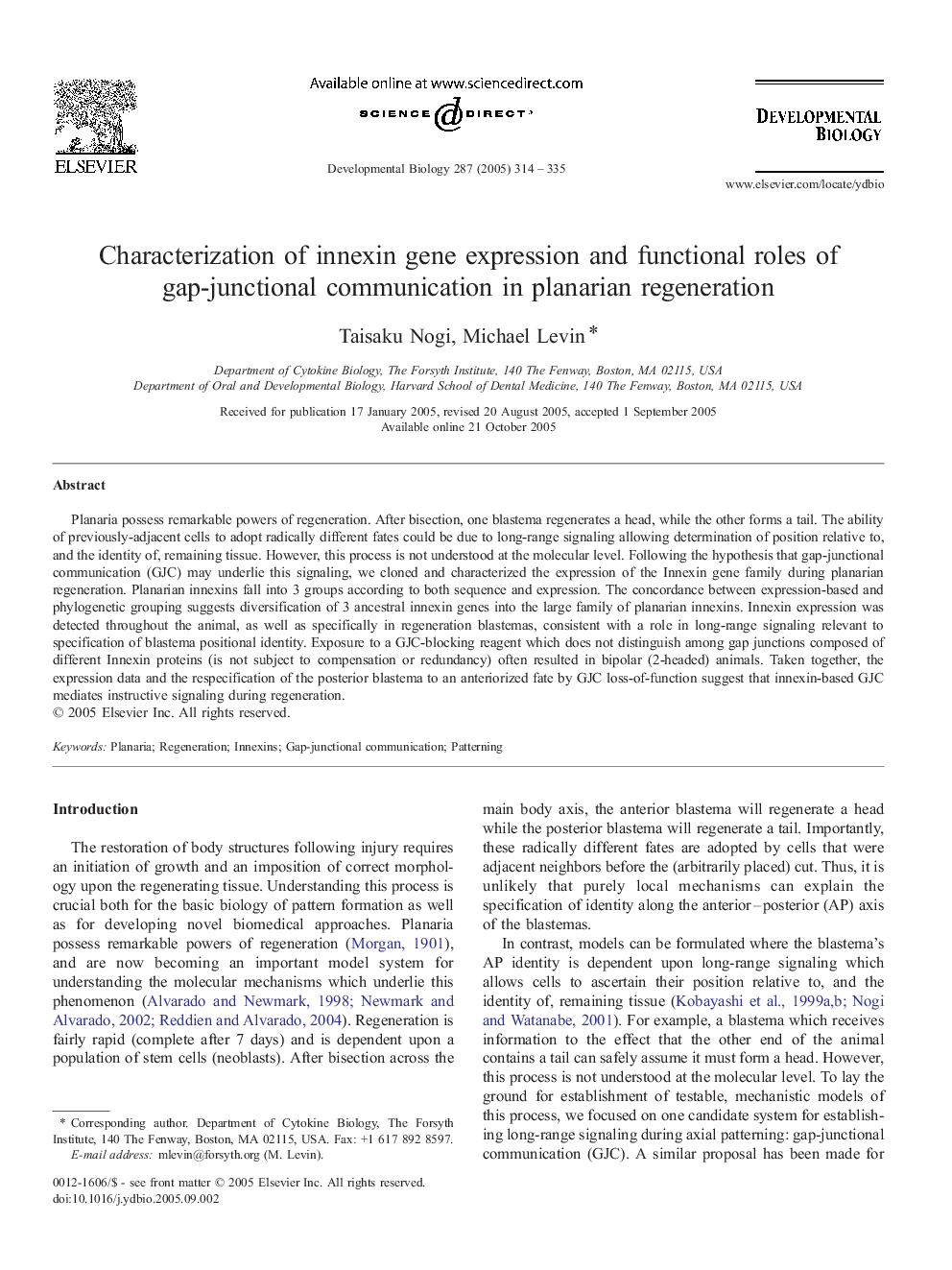| Article ID | Journal | Published Year | Pages | File Type |
|---|---|---|---|---|
| 10933969 | Developmental Biology | 2005 | 22 Pages |
Abstract
Planaria possess remarkable powers of regeneration. After bisection, one blastema regenerates a head, while the other forms a tail. The ability of previously-adjacent cells to adopt radically different fates could be due to long-range signaling allowing determination of position relative to, and the identity of, remaining tissue. However, this process is not understood at the molecular level. Following the hypothesis that gap-junctional communication (GJC) may underlie this signaling, we cloned and characterized the expression of the Innexin gene family during planarian regeneration. Planarian innexins fall into 3 groups according to both sequence and expression. The concordance between expression-based and phylogenetic grouping suggests diversification of 3 ancestral innexin genes into the large family of planarian innexins. Innexin expression was detected throughout the animal, as well as specifically in regeneration blastemas, consistent with a role in long-range signaling relevant to specification of blastema positional identity. Exposure to a GJC-blocking reagent which does not distinguish among gap junctions composed of different Innexin proteins (is not subject to compensation or redundancy) often resulted in bipolar (2-headed) animals. Taken together, the expression data and the respecification of the posterior blastema to an anteriorized fate by GJC loss-of-function suggest that innexin-based GJC mediates instructive signaling during regeneration.
Related Topics
Life Sciences
Biochemistry, Genetics and Molecular Biology
Cell Biology
Authors
Taisaku Nogi, Michael Levin,
